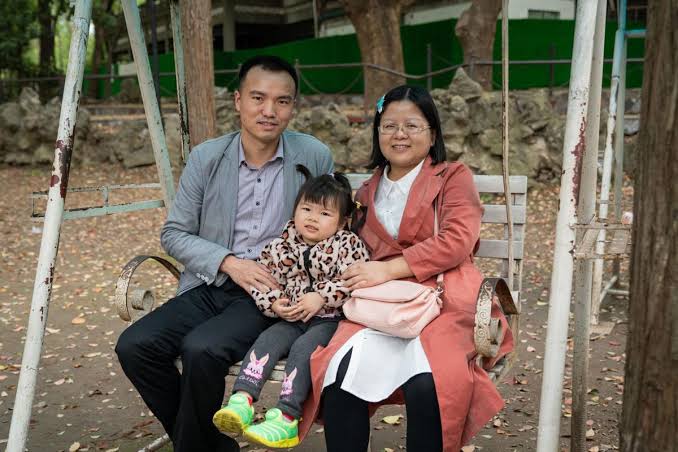Chinese population control experiments: more intrusion and damage than control

The Chinese Communist Party has now announced that it will be relaxing its two-child policy and Chinese couples will be allowed to have three children. This announcement comes after the once in a decade census of 31st May. Politburo has announced this policy because the government records show only 12 million births in 2020 which is the lowest number of births since 1961. China’s fertility rate fell from 2.75 in 1979 to 1.69 in 2018.
The census showed that almost 19% of the Chinese population are people over the age of 60 years. The one-child policy which was introduced to control the high rate of population growth has dented the social and economic fabric of Chinese society unintentionally but permanently.
So what exactly are population control policies?
Population control policies attempt at controlling or increasing the growth rate of population especially in economically poor, densely populated countries or ageing countries. Policies use measures such as contraception, sterilisation, abortions and incentives like tax benefit, health benefit, education benefits, employment et cetera.
Most population policies can be grouped into two categories: pro-natalist and anti-natalist. There is also a third category called eugenics but it comes with violation of human rights. Eugenics was majorly used during the period of World War II by nazi Germany where they persecuted Jewish people mercilessly.
Pro natalist: such population policies are in favour of increasing the birth rate of the particular country. The reasons can range from an ageing population to skewed gender ratio et cetera. Overpopulation is always called the mother of all economic, social problems. The resources have always been constant and an increased population on the existing resources will cause trouble.
Anti natal: such population policies work towards controlling the birth rate and growth rate of the population of the country. The reasons can be poverty, overpopulation et cetera.
The Chinese case: what happened in 1979
After Deng Xiaoping came to power in 1978, he started experimenting with the one-child policy in few parts of China. It wasn’t before 1980 that the one-child policy was strictly enforced in all parts of China. The logic behind this policy was that the population growth rate should not surpass the economic growth rate. Deng Xiaoping is also called the ‘architect of modern China’ because under his leadership China had some far fetched marketing reforms that pulled the country out of poverty.
Only keeping the economic aspects in mind the one-child policy created ramifications that are still stirring things up. For example, the one-child policy deeply skewed the gender ratio in Chinese societies as couples aborted or abandoned girl child.
The family planning was highly intrusive. Officials imposed huge fines on delinquent parents, many women were forced to abort, sterilise or forced to take IUDs. The Chinese government used the neighbourly watch to enforce the one-child policy. Campaigns such as “later, longer, fewer” were broadcasted to encourage the one-child policy.
Neighbours were encouraged to spy on each other, hence participating in government-sanctioned nationwide blackmail. Thorough records were kept by the government, employers, societies. Those who conform to the one-child policy were given major tax benefits, employment opportunities, healthcare. Those who didn’t pay an extensive fine. All single child couples agree to take care of all the 4 parents of the bride and groom when they get married. China had to cancel the one-child policy in the end because most of the Chinese were headed for retirement. This created a huge gap in the workforce.
So what does the new policy suggests?
The policy now relaxed the one-child policy to three children policy. It means that Chinese couples can now have up to three children. What’s more, they are incentivised to give birth to more children. This move is to improve China’s population structure and respond to the ageing population by preserving the country’s human resource advantage. China still is the worlds most populous country. An ageing population means that the country is headed towards retirement. There will be a decline in the working population, which may affect the economic goals of the country. Many services as a result will have to be outsourced leading to an increase in working cost and capital outflow. Also, the three child policy will try to balance the skewed gender ratio. In 2013 China allowed couples to have a second child if either of the parent was an only child. This policy did not help in altering the demographic structure because second child increases child-rearing cost.
The policymakers did not pay attention to reduce the childbearing cost which would have helped in increasing the demographic structure. Many developing countries without strict Child policies have suggested that reducing the childbearing cost for prospective parents helps in increasing the birthrate.
The latest announcement informed about reducing family spending on education so that people are incentivised to give birth to more children. The government also clarified that rewards, incentives and assistance systems continue for those who are following older two-child policy rules.
What about other countries that imposed population control policies?
Iran–
Iran is known for experimenting with population control policies which resulted in an unnatural demographic structure. For instance, many lives were lost in the Iran-Iraq war of 1980. The government encouraged married couples to produce as many children as they can to replace the population lost in war. Later on, in 2010 they mandated a lower birth rate. Couples were supposed to go under mandatory contraceptive courses before obtaining a marriage license. The government marketed and promoted the benefits of smaller families. In 2012 the government felt that the birthrate was declining and hence again promoted larger families. In 2014 the government banned permanent contraception and birth control.
Japan–
Japan is now called the land of the aged. On average Japanese live longer than any other people in the world. The average age is 87 years.
The birthrate in Japan has been declining for many years now. The government is incentivising and encouraging women to have more children. Many Japanese women do not have children and are not even married. The Japanese population structure is also and anti-immigrant. The government in some cities near Tokyo is offering parents a large sum of money if they give birth to a child. Governments are even ready to offer yearly income for 10 years to parents if a child is born.
Singapore –
Singapore has also experimented with population control policies and ended up reversing the anti-natal population policy. The baby boom policy was followed post World War II from 1980. This policy encouraged couples to have more children because the birth rate touched a record level low. The birthrate was below the replacement level fertility. The government encouraged couples to have three or more children. Prospective parents are paid a sum of money if they give birth to a child.
India –
India is the second most populated country in the world after China. India’s population is 1.25 billion which is still increasing. The first measures of sterilisation were taken in 1952 where people were forcefully sterilised against their will by Sanjeev Gandhi. Many youths who were forced into these sterilisation camps were unmarried. This move was later shunned by the media. India is a democratic country and force can not be used. The government introduced voluntary population control programmes where couples are morally persuaded to have two children or less. Only those who have two or fewer children are allowed to contest for election to a local government. The government used the slogan “Hum do humare Do” to encourage family planning. The Indian government offers various facilities to its employees, but it is restricted to only two children. Government offers incentives to families who accept sterilisation.
To sum it up, if this three child policy continues for a very long time like the one of 1979 did, the Chinese government may again have to reverse the move.




